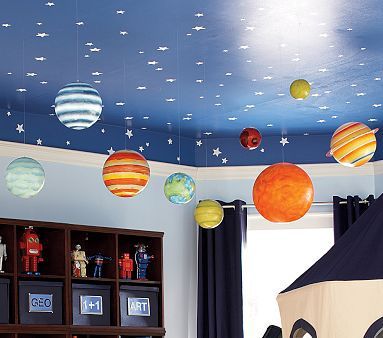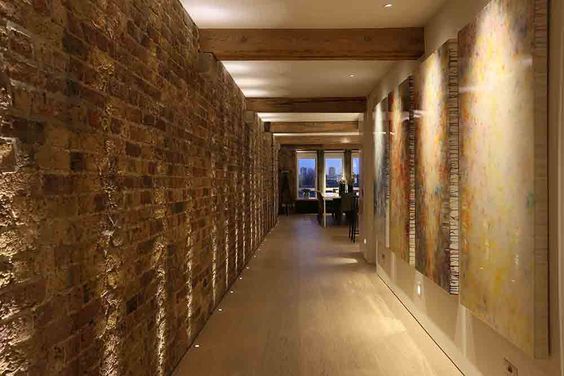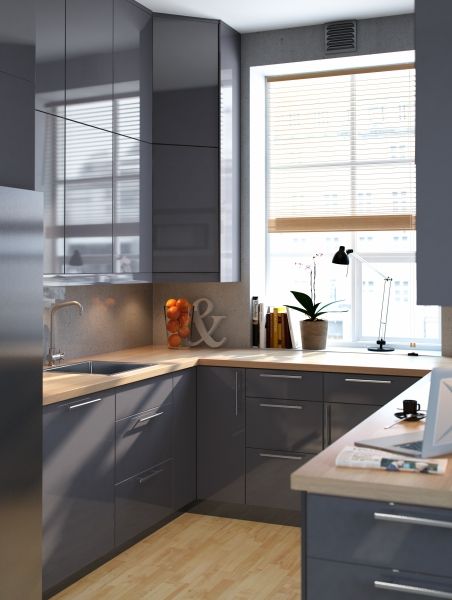I always get questions about children’s rooms, how to decorate, what materials to use, themes, and how far the kids go when choosing the decor.
Well, my concept has always been “less is more”. In this concept, even though it is a kids room, common sense and organisation must prevail. Like all the rest of the house, it has to have style, with no mess, no excesses, and no tiresome colours.
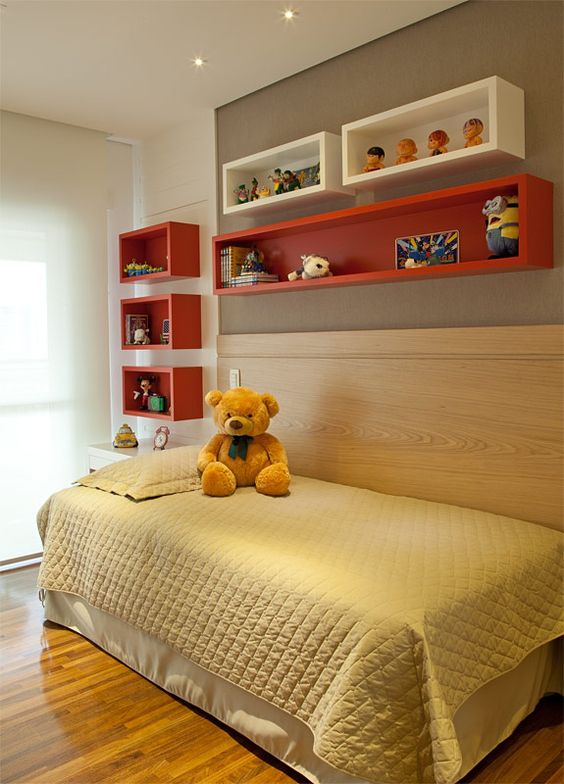
Nice shelves on the wall help to keep some organisation on the bedroom. 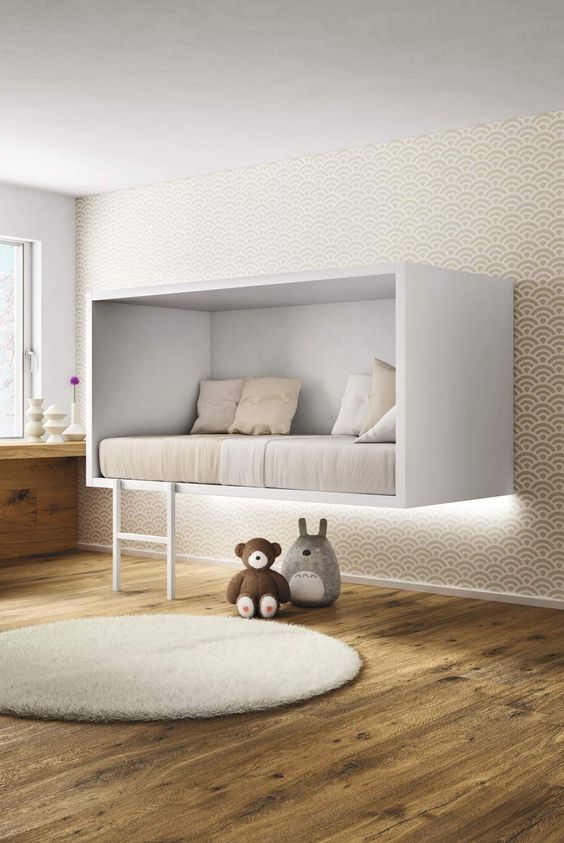
Interesting solution lifting the bed, letting some free space under..
First step is to do a spatial study of the environment: what is the size of the room, position of windows, doors, natural light, acoustic and thermal conditions. Next we will determinate the needs of the child who will inhabit this space. How old she or he is, what the daily routine is, what hobbies they have, and what their individual preferences for color and style are.
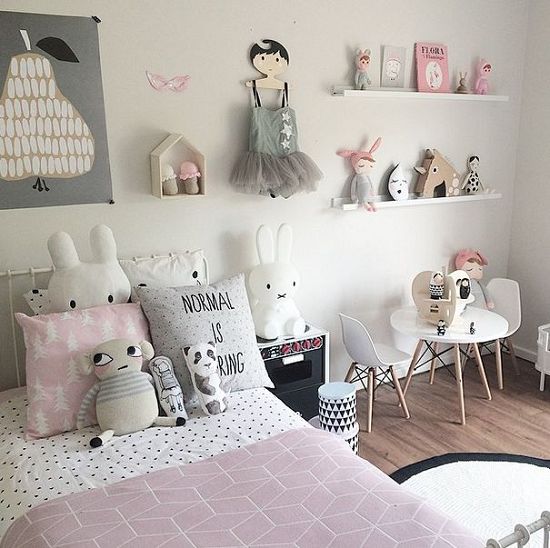
Furniture on the size of the children is important for them to feel their own space. 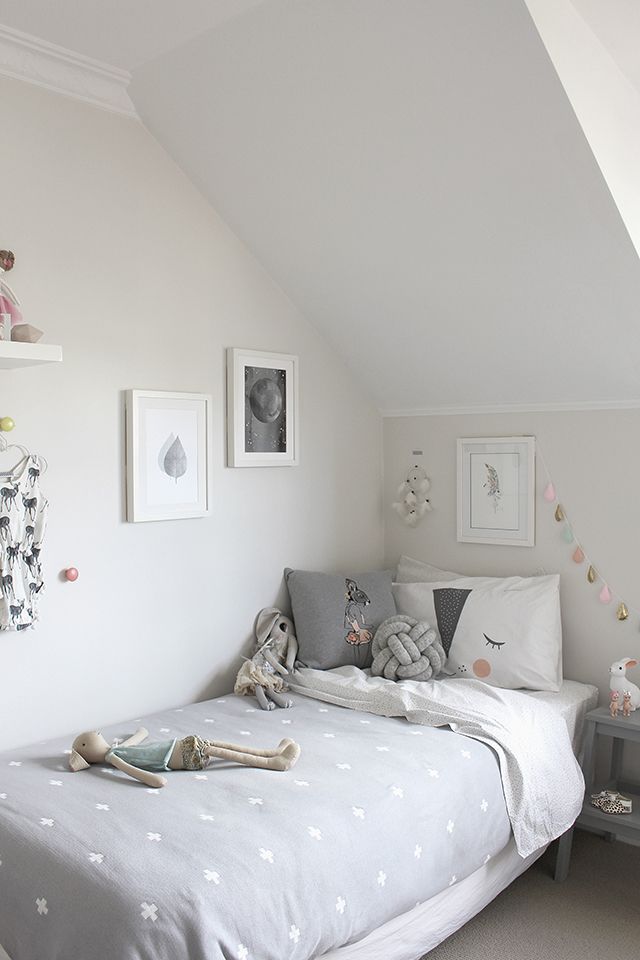
Furniture on the size of the children is important for them to feel their own space.
After the physical needs of the environment have been established, the furniture is distributed, including rest stations (such as bed, sofa, armchairs), work (desks), storage (closet, gazebo, shelves) and playful space (pedagogical models).
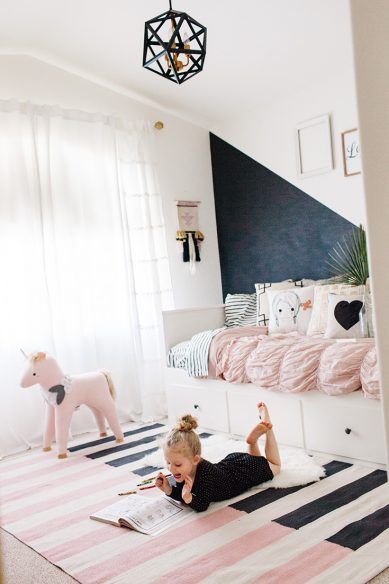
Let some space open, for the kids to discover their own talents and abilities. 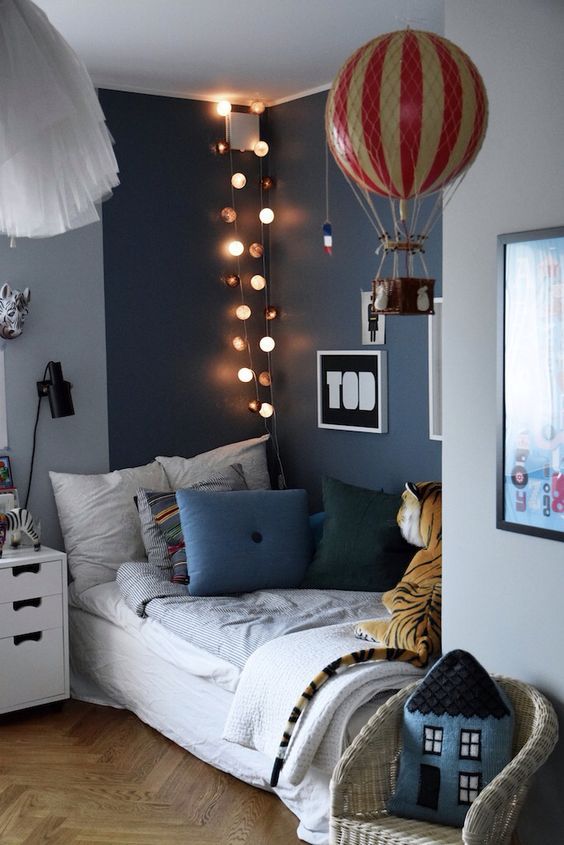
You can choose one wall to be in a darker colour, keeping the rest lighter.
Only after the fulfillments of the space requirements we begin to seek the identification of the child with the environment through themes, colours, shapes and fabrics. At this stage, the participation of the child is fundamental, but one has to have limits.

Create a reading corner with some magic effects. 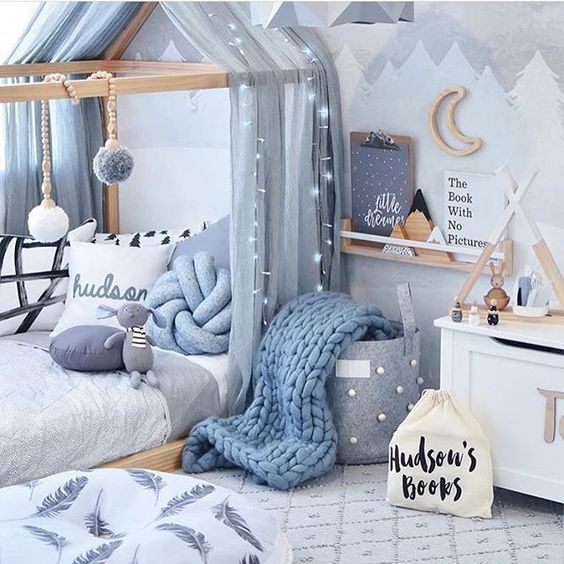
Explore different fabrics and textures in a very soft tone of blue.
It is important not to leave loose objects in the space, to have places to store the toys and books, so that the child can alone take and put these elements again in the correct places, learning to have autonomy within their own space.
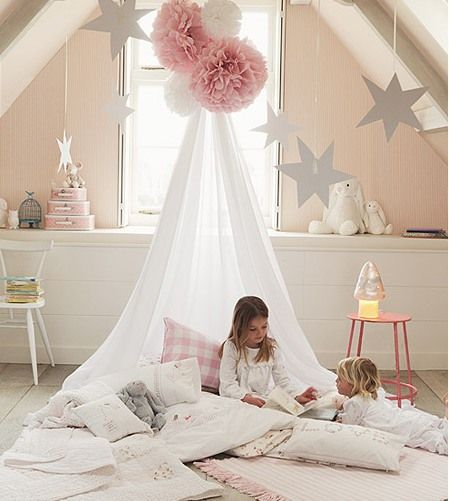
Magic atmosphere created by this veil, inspiring the kids to read and concentrate. 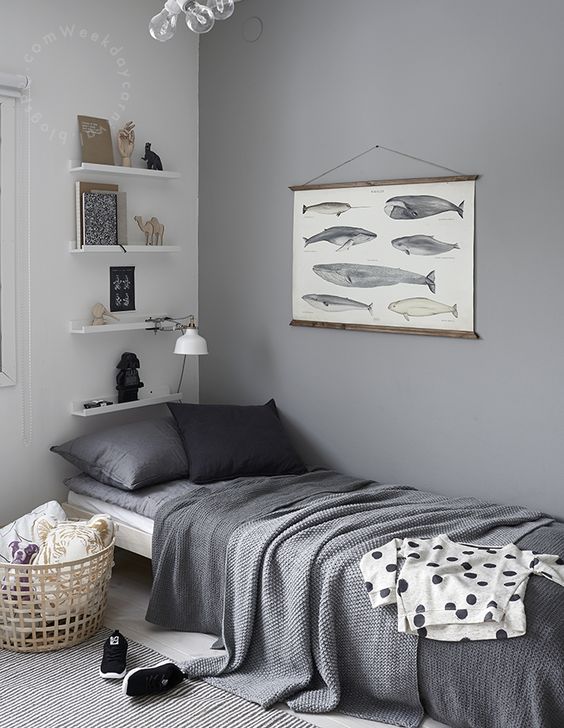
Try to use different tones from the same colour, its always a success!!
Lifting the bed can be a solution for small environments cause you can use the space underneath for desk or even to store toys and books.
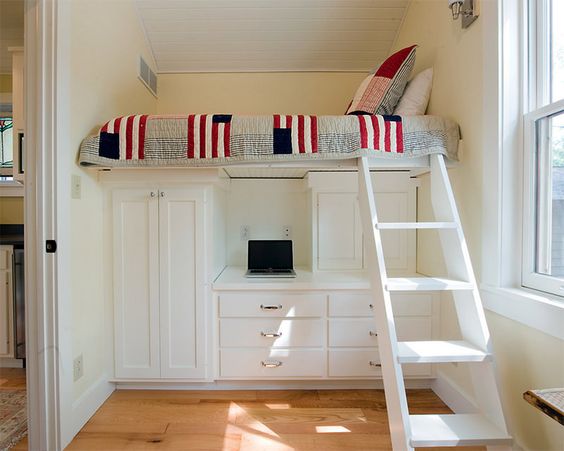
Use the space under the bed for some closets. 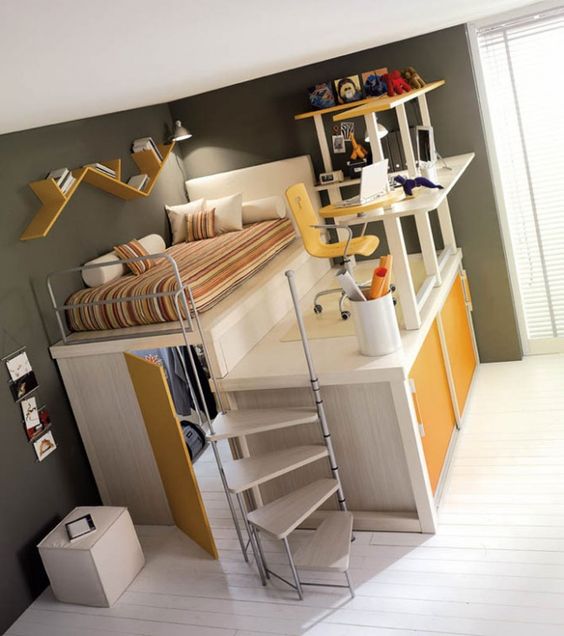
Interesting solution with a closet under the bed. 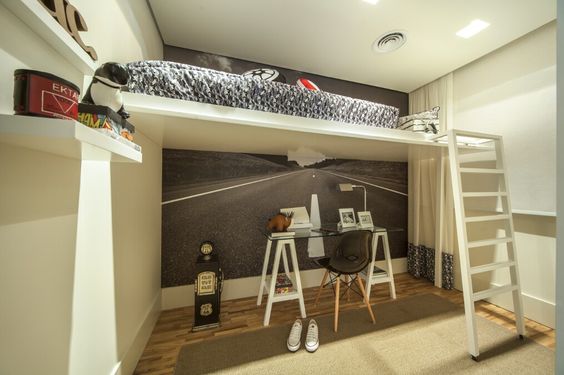
Try the desk under the bed, its an enormous potential space for books and toys. 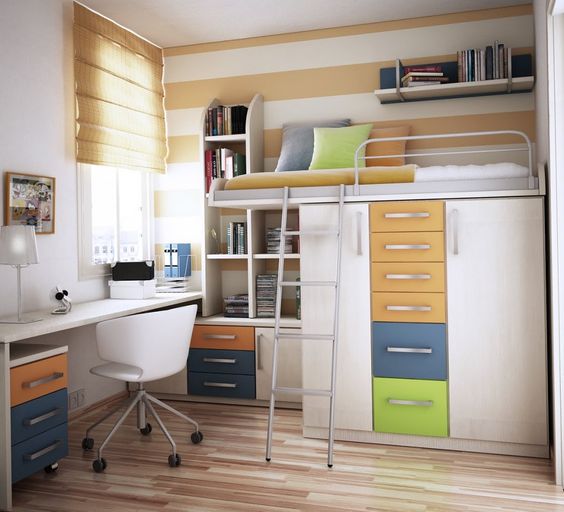
Observe how much space you can have lifting the bed up.
Nice to remember that this child will grow and it would be interesting that the room accompany this growth as time goes by. Therefore, my choices are always more elegant, timeless and functional. Boring? Absolutely not. The empty environments are ideal for the psychological development of children, leaving room for creativity and development of individual talent.
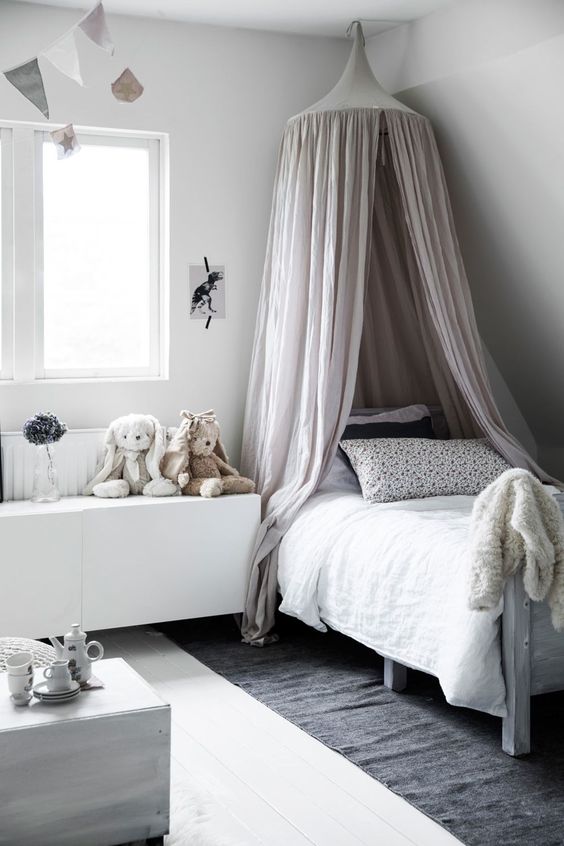
Perfect colour choice and natural fabrics, a bedroom that can easily change with the years. 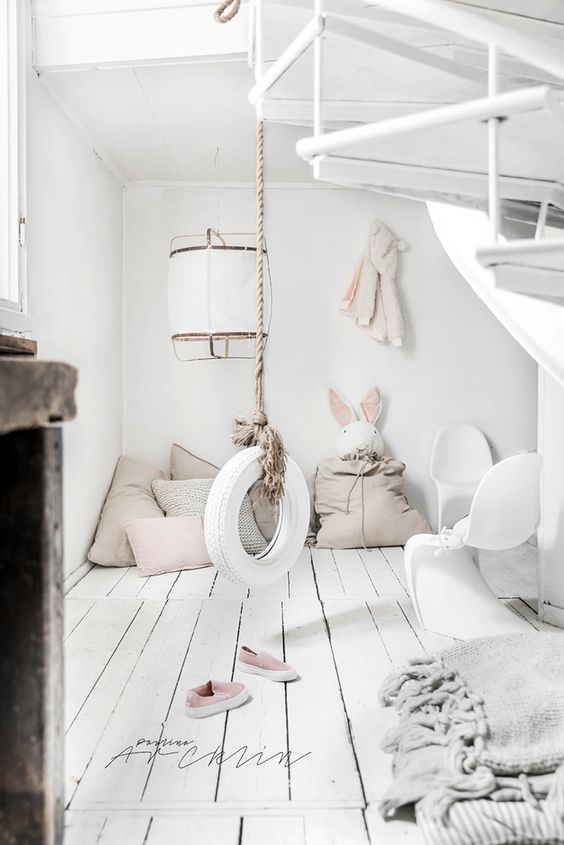
Interesting ludic play corner. 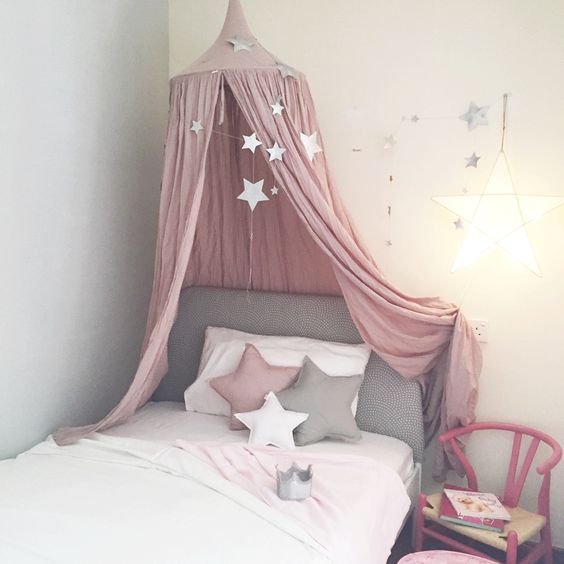
Stars as always a choice that brings style and go through years.
Painting the walls is cool, but be careful about the colours paletes. Avoid too strong and stimulating colours too, such as pure yellow, orange, bright red, pink. Such as pure colours they tend to make children more agitated. Choose softer colours like pink deco (pantone of 2016), greyer blues and greens, warmer lilacs.

Observe the beautiful nice lilac colours used on the wall and on the fabrics. 
Different browns on the walls keeps the bedroom ready to grow together with the kids.
Dark colours can also have a very cool effect on the walls, such as deep blue, dark green, red wine. But do not paint all the walls of the room, just one or two strategic ones, leave the others in neutral color with beige, gray or off-white.
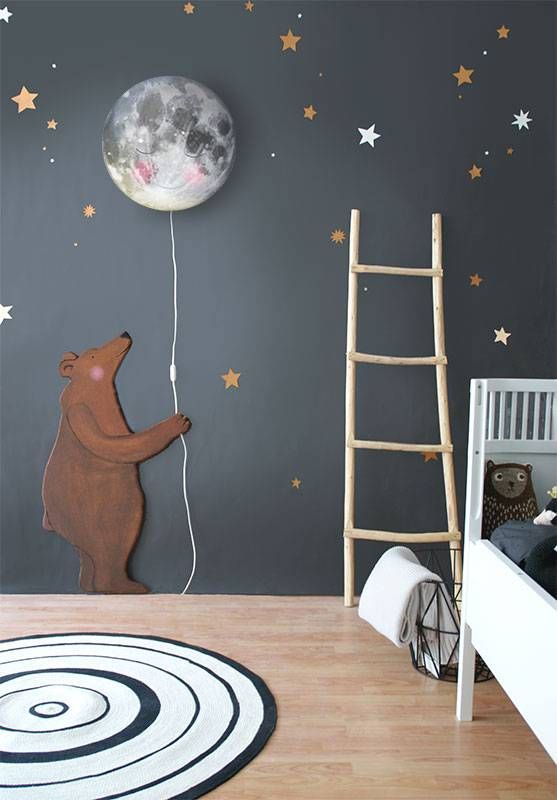
Forms and shapes glued on the wall, creates great effects. 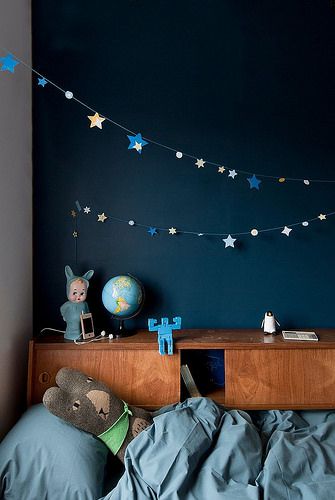
Dark blue wall, its perfect but keep other walls on lighter colours. 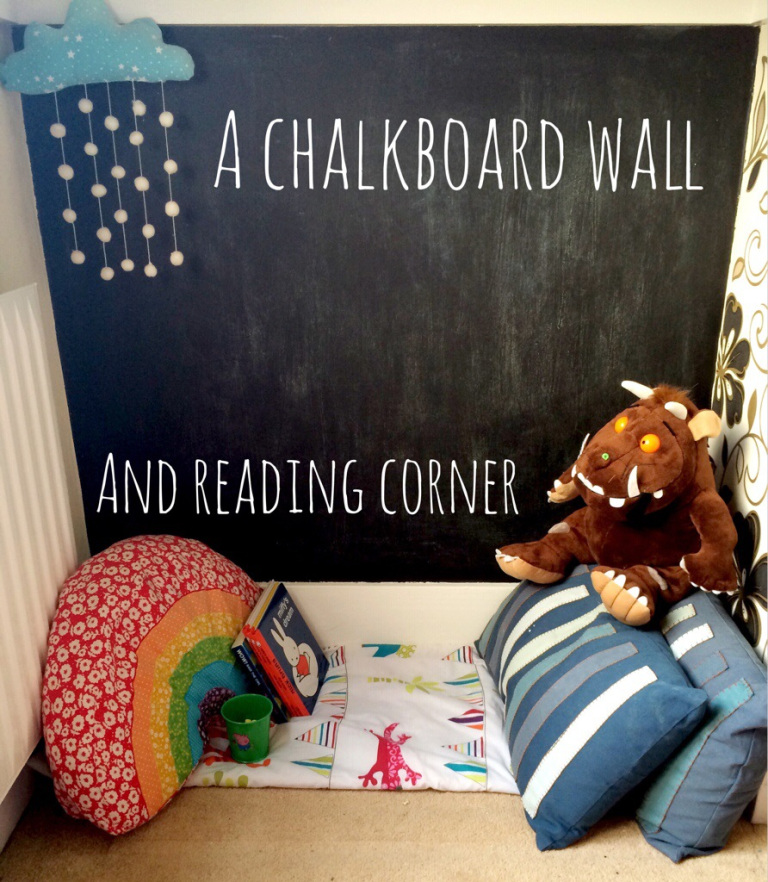
Chalkboard is always useful in the kids room.
Use and abuse stickers, those big ones with cool pictures, which can be a patchwork of photos of the child’s daily life, or photos of their hobbies and preferences. They are cheap and effective solutions. There are several offers on the internet, you can visit the sites: Wall-art e E-bay .
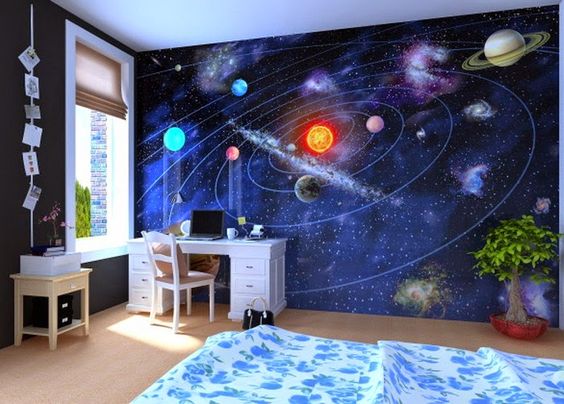
Paintings and stickers creates a big range of themes. 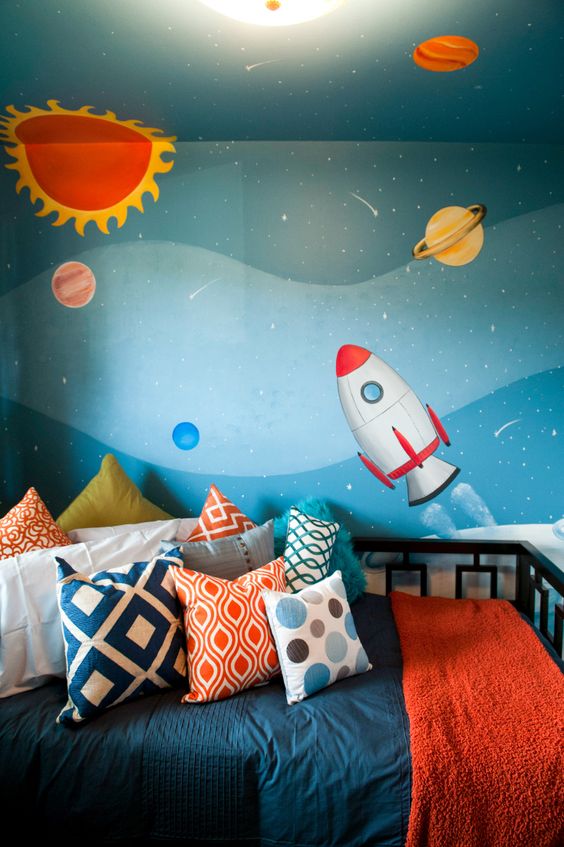
Wall and ceiling, on this sticker space ships option.
A very interesting possibility is to explore the ceiling to insert interesting photos or paintings, sky reproduction and stars.
Twins are always a good reason to give the bedroom a cool look with bunked beds. The rules are the same, even with two or more kids using the same space is necessary to keep the same premises.
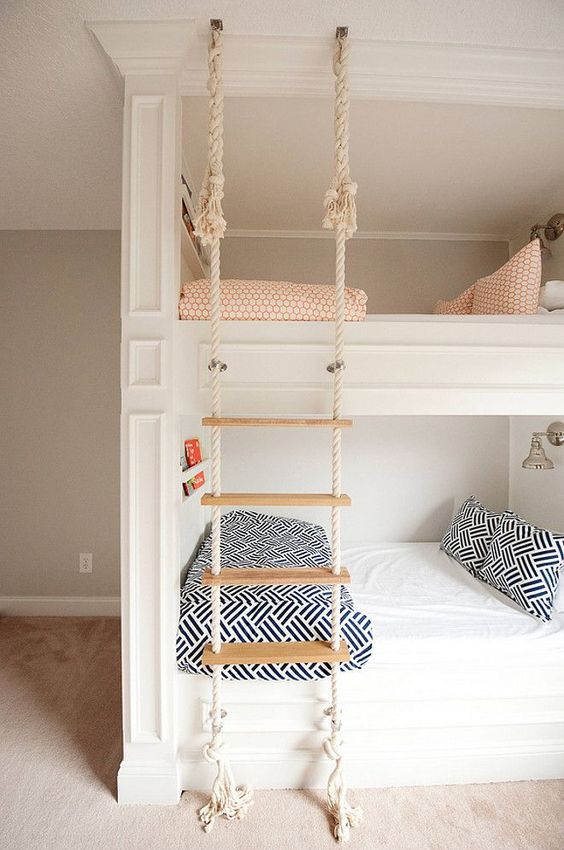
Twins from different sex, but same solution. Observe the nice rope ladder. 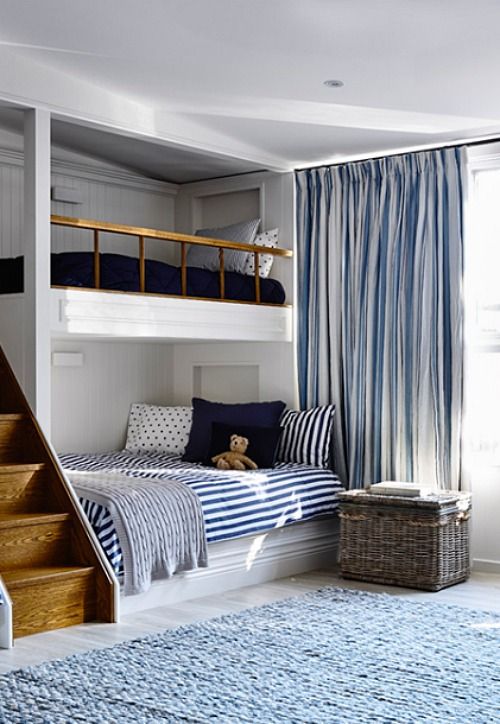
Elegant solution, inspired by wooden boats. 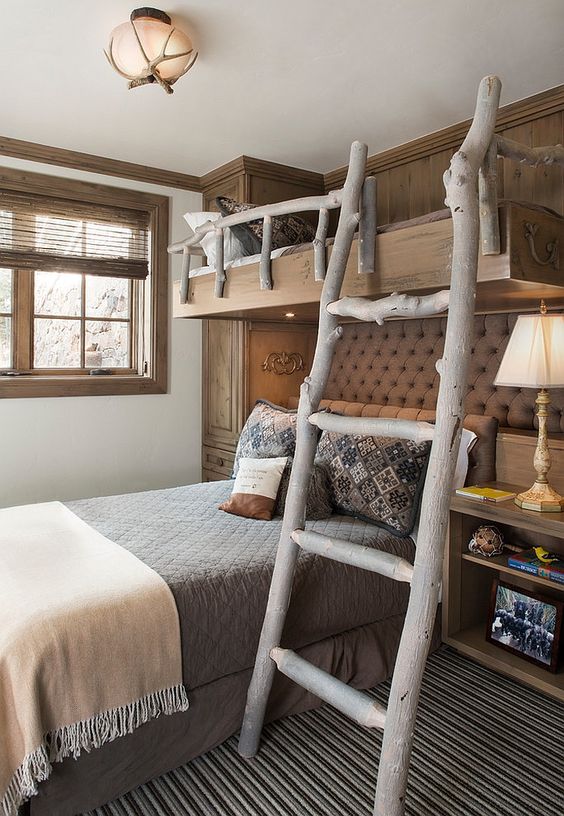
Rustic inspiration on this winter house. Observe the brown tones, timeless. 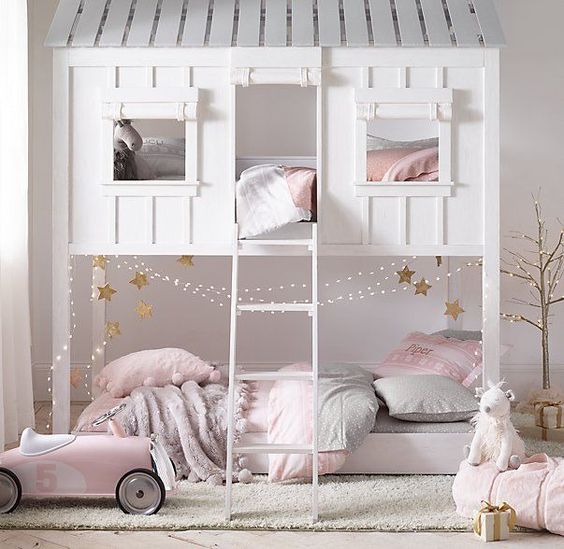
Classic solution for twins girls, in romantic rose colours.
Again, remember that less is more, so do not allow the space to be filled with furniture or scattered objects.
If you liked this post, please subscribe and let your comments bellow. See you soon!!!


